Food Storage Mistakes
6. Food Storage Conditions and Containers:
 Whether it’s preserving seeds and gardening supplies or preserving food, there’s a right way and a whole lot of wrong ways to do it. I suppose that since it’s been so long since we’ve had to LIVE based upon our understanding of long-term storage of food, it explains why there seems to be so few who understand the proper way to store these items. As such there are all sorts of rumors out there for storing food. So let me give you the absolute facts in this regard, right here; right now.
Whether it’s preserving seeds and gardening supplies or preserving food, there’s a right way and a whole lot of wrong ways to do it. I suppose that since it’s been so long since we’ve had to LIVE based upon our understanding of long-term storage of food, it explains why there seems to be so few who understand the proper way to store these items. As such there are all sorts of rumors out there for storing food. So let me give you the absolute facts in this regard, right here; right now.
There are standard enemies to a long-shelf life no matter where you live. These destructive villains are A) Temperature B) Moisture C) Oxygen D) Light E) Invaders and lastly F) Chemical exposures.
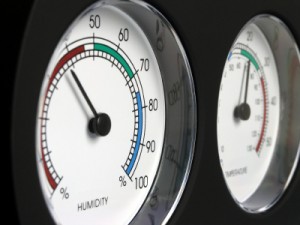 When it comes to temperatures, ALL FOODS, and future foods, benefit from cool temperatures. The benchmark I give people is 70 degrees maximum on the high side to as low as 45 degrees on the low side. (I use 68 degree or cooler in my home for all areas that contain food and food production products.) The cool temperatures allow your ingredients to sleep peacefully until you’re ready to use them.
When it comes to temperatures, ALL FOODS, and future foods, benefit from cool temperatures. The benchmark I give people is 70 degrees maximum on the high side to as low as 45 degrees on the low side. (I use 68 degree or cooler in my home for all areas that contain food and food production products.) The cool temperatures allow your ingredients to sleep peacefully until you’re ready to use them.
Moisture in the air intensifies your heat. So even if you’re in a hot climate, having a de-humidifier can make a world of difference in the temperature of a space. Humidity gets lower the closer to the ground you get. The hotter it is, the more humidity will affect your goods because hot air can hold more moisture than cool air. If the air temperature is 75 degrees Fahrenheit (24 degrees Celsius) and the (relative) humidity is zero percent, the air temperature will feel like it’s 69 degrees Fahrenheit (21 C) to our bodies. If the air temperature is 75 degrees Fahrenheit (24 C) and the (relative) humidity is 100 percent, then we will feel like it’s 80 degrees (27 C) out. So you see that even if you don’t want to pay for the air-conditioning for the whole house, you can still invest in a dehumidifier and make a big difference in protecting your food investments.
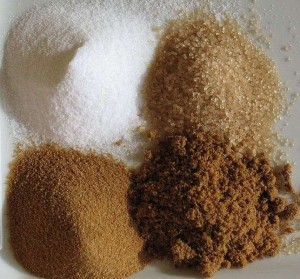 Some foods, such as sugar, get hardened when they are exposed to the slightest bit of moisture over time. White rice however absorbs moisture. So if you’re putting a large amount of sugar in a bucket, put a cup of rice in a brown paper bag (lunch size) on the top of your sugar and that will cut down on the hardening. (As a reminder, sugar has an indefinite shelf-life). You can also use this trick when storing items in Mason Jars. Just put a tablespoon of rice in a cupcake paper. Place it down in the opening of the jar, but only far enough for the top portion of the cupcake paper to fold down over the top edge of the jar. Place your flat Mason jar lid on to hold the cupcake paper in place. Then when you screw on the lid, you’re also holding the cupcake paper in place. This is done so that you don’t end up with rice mixed in with the food items you’re trying to preserve.
Some foods, such as sugar, get hardened when they are exposed to the slightest bit of moisture over time. White rice however absorbs moisture. So if you’re putting a large amount of sugar in a bucket, put a cup of rice in a brown paper bag (lunch size) on the top of your sugar and that will cut down on the hardening. (As a reminder, sugar has an indefinite shelf-life). You can also use this trick when storing items in Mason Jars. Just put a tablespoon of rice in a cupcake paper. Place it down in the opening of the jar, but only far enough for the top portion of the cupcake paper to fold down over the top edge of the jar. Place your flat Mason jar lid on to hold the cupcake paper in place. Then when you screw on the lid, you’re also holding the cupcake paper in place. This is done so that you don’t end up with rice mixed in with the food items you’re trying to preserve.
If you want to sprout or grow a food in the future, then it’s best to store the items in a sealed plastic container because it protects it AND allows it to breathe since plastic is NOT oxygen proof. However, when it comes to storing ingredients containing fats and/or oils, it’s imperative that you keep the oxygen exposure down to a minimum. Wheat isn’t a volatile food to store, however, if you purchase poor quality wheat with cracked kernels, then the vitamin E in the kernels which protects it for so long will turn rancid upon contact with the air. The same holds true with just about any nutrients our food contains. Oxygen exposure depletes nutrients. Nuts are full of great oils as is brown rice, which is why they have a reputation for going bad so quickly. So, if an item has fat or vital nutrients inside that you need to protect, you will want to store the food in oxygen-proof containers/packaging such as #10 cans, glass jars, or strong and thick “Mylar” bags.
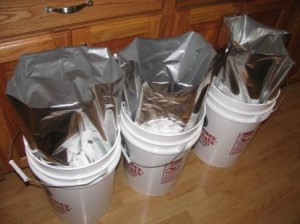 While you want the grains or sprouts to breathe, you don’t want the weevils inside to thrive. And no matter how hard you try, you’ll never be able to purchase grains without weevils. You may not see them, but you will if you give them plenty of opportunity to grow. This is when I use food grade diatomaceous earth. Just a tablespoon or two on the top of my ingredients in a bucket will kill the bugs. But guess what? DE is actually GOOD for you, so you don’t have to worry about you eating it.
While you want the grains or sprouts to breathe, you don’t want the weevils inside to thrive. And no matter how hard you try, you’ll never be able to purchase grains without weevils. You may not see them, but you will if you give them plenty of opportunity to grow. This is when I use food grade diatomaceous earth. Just a tablespoon or two on the top of my ingredients in a bucket will kill the bugs. But guess what? DE is actually GOOD for you, so you don’t have to worry about you eating it.
Use oxygen absorbers (or HandWarmers) for powdered food items that you also want to prevent from losing nutrients or causing oils to go rancid. (Be sure that you’re purchasing your oxygen absorbers from a reliable source as there are so many companies that sell them but they are no longer viable. )
 The better you package items, the less likely you are to get mice and other rodents bothering them. If they can’t smell it, they won’t go after it. So this is also why it’s really important to keep your food area immaculate. A couple of grains on the floor is enough to tell all of the little pests that there’s a party going on at your house. Additionally, regardless of what you can visibly see, be sure to have plenty of mousetraps on hand and set them around your food. Even if you don’t have any problems now, a flood, earthquake, and many other crisis scenarios will bring them out of the woodwork, so be prepared. We also have larger traps for rodents such as raccoons and such to use under such circumstances.
The better you package items, the less likely you are to get mice and other rodents bothering them. If they can’t smell it, they won’t go after it. So this is also why it’s really important to keep your food area immaculate. A couple of grains on the floor is enough to tell all of the little pests that there’s a party going on at your house. Additionally, regardless of what you can visibly see, be sure to have plenty of mousetraps on hand and set them around your food. Even if you don’t have any problems now, a flood, earthquake, and many other crisis scenarios will bring them out of the woodwork, so be prepared. We also have larger traps for rodents such as raccoons and such to use under such circumstances.
Above all, remember that food is the ONE investment that will not lose its value unless it loses its purpose, thus making it one of your very best investments. So treat it that way. I’ve never been able to understand people who have insurance out the wazoo for their house, cars, boats, and even pets but tell me it’s too much trouble to turn their A/C down two degrees so that they can better protect their food.
7: Food Nutrition:
It’s no secret that the nutrients in our food have slowly been stripped away bit by bit to the point that we have to work really, really hard to avoid the poisons AND to find a way to provide our bodies with the proper tools to function. If that’s the modus operandi of the now, then what can we expect if something really serious happens to bring our food supplies to a screeching halt? We’ll perish for a lack of nutrients just as easily as we can perish by giving our body whole nutrients that they aren’t used to. My heart aches as I read of the thousands of immigrants who set sail to our nation so many years ago who died as a result of the lack of Vitamin C in their diets, aka scurvy, knowing that they had what they needed to reverse those effects, they just didn’t know how. (Sprouting wheat requires no light and is a great source of Vitamin C.)
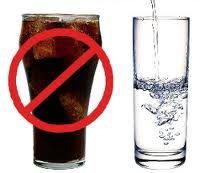 My heart doesn’t ache any less when I see people blowing their entire budget on dead foods that not only don’t provide any nutrients but actually deprive the body of key nutrients just so that they can be digested. (Soda pop, by the way, is one of the worst offenders when it comes to robbing the body of key nutrients. And yet I see people with loads and loads of it on their shelves, but NO water. *sigh*) Being committed to enjoying nutrients in our food NOW is the only way we can be assured that we’ll do the same in the future. It goes back to what I mentioned in the first 5 Food Storage Mistakes—buy what you eat, and eat what you buy. The fact of the matter is we don’t need to wait for a huge disaster to hit us before we have a food crisis. A famine wouldn’t have any different affect the majority of households today when it comes to a scarcity of nutrients because when it comes to the quality of nutrients in our food, we’re already living amidst the worst food crisis of our entire nation’s history. So, while you’re planning the meals for today and 52 weeks of tomorrow, be sure that you give way for quality nutrients to guide your Food Preparedness efforts.
My heart doesn’t ache any less when I see people blowing their entire budget on dead foods that not only don’t provide any nutrients but actually deprive the body of key nutrients just so that they can be digested. (Soda pop, by the way, is one of the worst offenders when it comes to robbing the body of key nutrients. And yet I see people with loads and loads of it on their shelves, but NO water. *sigh*) Being committed to enjoying nutrients in our food NOW is the only way we can be assured that we’ll do the same in the future. It goes back to what I mentioned in the first 5 Food Storage Mistakes—buy what you eat, and eat what you buy. The fact of the matter is we don’t need to wait for a huge disaster to hit us before we have a food crisis. A famine wouldn’t have any different affect the majority of households today when it comes to a scarcity of nutrients because when it comes to the quality of nutrients in our food, we’re already living amidst the worst food crisis of our entire nation’s history. So, while you’re planning the meals for today and 52 weeks of tomorrow, be sure that you give way for quality nutrients to guide your Food Preparedness efforts.
8: Not Enough Water:
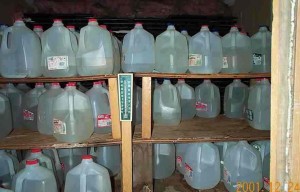 About 10 years ago I came up out of the basement after being there most of the day organizing and doing inventory. I proudly announced to my husband that we now had 500 gallons of milk. I was so excited telling him about all of the things we can do with milk including making cheese, yogurts, frostings, hearty soups, etc. Instead of being excited with me he just gave me this dumbfounded look. In frustration over his lack of enthusiasm I finally asked him why he wasn’t just as pleased as I was. His answer, “honey, I’m sorry to tell you this, but no, we don’t have 500 gallons of milk.” My first reaction was to argue with him and assure him that my inventory was perfect. I knew exactly how much we had. He then clarified his statement. “Honey, we can’t possibly have 500 gallons of milk because you’re referring to powdered milk and in order to make milk from powdered milk you need to have water, and last I checked we don’t have 500 gallons of water stored.”
About 10 years ago I came up out of the basement after being there most of the day organizing and doing inventory. I proudly announced to my husband that we now had 500 gallons of milk. I was so excited telling him about all of the things we can do with milk including making cheese, yogurts, frostings, hearty soups, etc. Instead of being excited with me he just gave me this dumbfounded look. In frustration over his lack of enthusiasm I finally asked him why he wasn’t just as pleased as I was. His answer, “honey, I’m sorry to tell you this, but no, we don’t have 500 gallons of milk.” My first reaction was to argue with him and assure him that my inventory was perfect. I knew exactly how much we had. He then clarified his statement. “Honey, we can’t possibly have 500 gallons of milk because you’re referring to powdered milk and in order to make milk from powdered milk you need to have water, and last I checked we don’t have 500 gallons of water stored.”
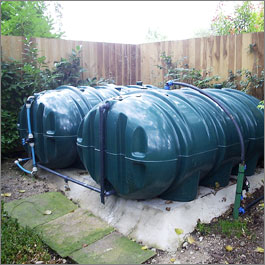 You can bet that that problem changed very quickly after I realized the truth of his statement. Unfortunately though, I find this to be a lesson that not everyone’s learned very well. We get so excited sometimes in our inventory that we fail to realize the water that’s necessary in order for our food inventory to mean anything is non-existent. I have an entire closet of freeze-dried and dehydrated foods, but the bottom line is I can’t afford to eat any of it if I don’t have enough water on hand to reconstitute it—let alone cook with it. Recently I wrote an article which demonstrated what kind of lackluster meals we could create with the recommended minimal amounts of food that you have on hand for each person for a year. The results produced a 3 inch loaf of bread and ¾ cups of beans to eat. Just to make that recipe for 3 meals a day, per person, per year, with sufficient water to wash it down with as well, I figured out that I would need 45 gallons of water per person, per year! This doesn’t take into account the drinking water that’s absolutely necessary, nor the other water needed for cooking, sanitation, and hygiene. As such, my suggestion when you’re taking an inventory of your foods, realize that if you’ve got something that requires water to make it, then be sure that that’s included in your inventory as well.
You can bet that that problem changed very quickly after I realized the truth of his statement. Unfortunately though, I find this to be a lesson that not everyone’s learned very well. We get so excited sometimes in our inventory that we fail to realize the water that’s necessary in order for our food inventory to mean anything is non-existent. I have an entire closet of freeze-dried and dehydrated foods, but the bottom line is I can’t afford to eat any of it if I don’t have enough water on hand to reconstitute it—let alone cook with it. Recently I wrote an article which demonstrated what kind of lackluster meals we could create with the recommended minimal amounts of food that you have on hand for each person for a year. The results produced a 3 inch loaf of bread and ¾ cups of beans to eat. Just to make that recipe for 3 meals a day, per person, per year, with sufficient water to wash it down with as well, I figured out that I would need 45 gallons of water per person, per year! This doesn’t take into account the drinking water that’s absolutely necessary, nor the other water needed for cooking, sanitation, and hygiene. As such, my suggestion when you’re taking an inventory of your foods, realize that if you’ve got something that requires water to make it, then be sure that that’s included in your inventory as well.
9: Appetite Fatigue:
 Have you ever had one of those days when you look inside the refrigerator to find something to make for dinner and nothing sounds good? Perhaps you can better relate to trying to find something to wear amidst a full closet and still not finding anything that makes you happy. Well, this is called appetite fatigue and it’s not some fictional buzz word, nor is it the result of a selfish state of mind. Three years ago several humanitarian organizations sent thousands of pounds of beans to the struggling nation of Ethiopia. Now, three years later nearly half of the beans are still sitting there in the shipping container. Why? It’s not because the Ethiopians are no longer starving. It’s because they simply cannot bear to eat another bean. They are literally still starving due to appetite fatigue. Even if you did get past the appetite fatigue from a physical standpoint, a person would still be affected by it emotionally.
Have you ever had one of those days when you look inside the refrigerator to find something to make for dinner and nothing sounds good? Perhaps you can better relate to trying to find something to wear amidst a full closet and still not finding anything that makes you happy. Well, this is called appetite fatigue and it’s not some fictional buzz word, nor is it the result of a selfish state of mind. Three years ago several humanitarian organizations sent thousands of pounds of beans to the struggling nation of Ethiopia. Now, three years later nearly half of the beans are still sitting there in the shipping container. Why? It’s not because the Ethiopians are no longer starving. It’s because they simply cannot bear to eat another bean. They are literally still starving due to appetite fatigue. Even if you did get past the appetite fatigue from a physical standpoint, a person would still be affected by it emotionally.
It’s amazing as I read of the accounts of those who were imprisoned in Russia and Germany during World War II, explaining how excited they were for the single day of the week in which their food rations went from the same old, same old to something different. This something different wasn’t Angel Food Cake or Four Cheese Baked Ziti. Nope, it was a seriously watered down pork broth. Yes, I said PORK. You do realize that the majority of these prisoners were orthodox Jews, right? And yet a barely there pork broth was the highlight of their week because it was different from the mush that they usually had to eat. So please, please plan on having a very diverse array of meals to eat in your year-long menu planning. The minimum amount of meals I would suggest is 14 for each mealtime ie: 14 breakfasts, 14 lunches, 14 snacks, and 14 dinners. And remember that now is a great time for you to try out various cookbook ideas–not during a crisis. When you stumble upon something that the family really, really loves, then be sure you include that into your plan.
10: Comfort Food:
Closely associated with appetite fatigue, but certainly not the same, is being aware of the value of comfort foods. I’m sure we’ve all had a day in which we were convinced that a piece of chocolate or a Dr. Pepper/Cherry Coke, or a delicious peach cobbler was going to chase the blues away. And to think that this kind of thing happens everyday for some, and regularly for others, even when life is somewhat peaceful and calm all around us. (Relatively speaking, that is.)
 Last year I had several persons take advantage of a challenge I issued in which people were to go 14 days without purchasing any other foods. In other words they were to consume only that which was already in their home for their meals, snacks, etc. No going to the car dealership for their Labor Day sale and getting free hotdogs; no latte from the local coffee shop. All food had to come from what a person already had on hand for 14 days. A lot of folks were good about taking the challenge with the rest of their family. Some were very surprised that they weren’t as “ready” as they thought they were. But there was a common theme in all of the reports I got back from those who joined in—they were surprised how valuable comfort foods became to them and were definitely awakened to the fact that they needed MORE! You’d be surprised how far cookies, brownies, homemade ice cream, scones, fruit pies, or your favorite smoothie will take you from the depths of STRESS! Even the more savory of comfort foods such as mashed potatoes, cornbread, and bacon made their way into people’s minds as something that they clearly didn’t have enough of. You’d be surprised what kind of oddball things you’ll crave after a while too. I hadn’t eaten a Twinkie since the 8th grade when I went to the Philippines for a year and a half. And yet I kept having dreams that I was back in the States and I was looking high and low for a Twinkie. Sure enough, when I finally returned home, the first thing I went to purchase was a Twinkie. (And I haven’t had one since then.) Is it a coincidence that “STRESSED” spelled backwards is “DESSERTS”? I don’t think so. *grin*
Last year I had several persons take advantage of a challenge I issued in which people were to go 14 days without purchasing any other foods. In other words they were to consume only that which was already in their home for their meals, snacks, etc. No going to the car dealership for their Labor Day sale and getting free hotdogs; no latte from the local coffee shop. All food had to come from what a person already had on hand for 14 days. A lot of folks were good about taking the challenge with the rest of their family. Some were very surprised that they weren’t as “ready” as they thought they were. But there was a common theme in all of the reports I got back from those who joined in—they were surprised how valuable comfort foods became to them and were definitely awakened to the fact that they needed MORE! You’d be surprised how far cookies, brownies, homemade ice cream, scones, fruit pies, or your favorite smoothie will take you from the depths of STRESS! Even the more savory of comfort foods such as mashed potatoes, cornbread, and bacon made their way into people’s minds as something that they clearly didn’t have enough of. You’d be surprised what kind of oddball things you’ll crave after a while too. I hadn’t eaten a Twinkie since the 8th grade when I went to the Philippines for a year and a half. And yet I kept having dreams that I was back in the States and I was looking high and low for a Twinkie. Sure enough, when I finally returned home, the first thing I went to purchase was a Twinkie. (And I haven’t had one since then.) Is it a coincidence that “STRESSED” spelled backwards is “DESSERTS”? I don’t think so. *grin*
Tune in the day after tomorrow for the next article in this series. Until then—here’s to Peace in your Preparedness.


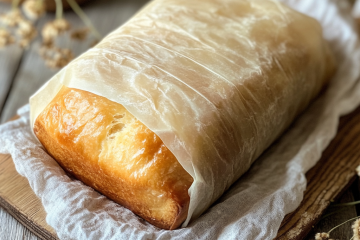
35 Comments
Comments are closed.